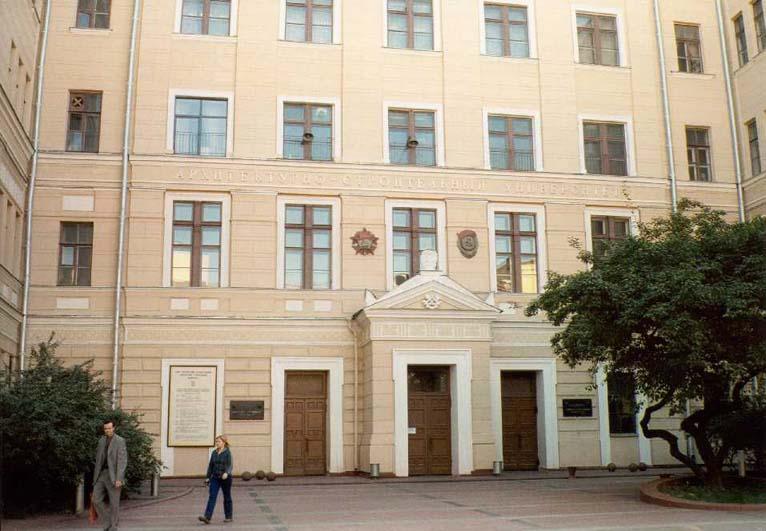
- •My studies
- •Vocabulary:
- •Questions to the text:
- •St. Petersburg
- •Vocabulary:
- •Questions to the text:
- •Building materials
- •Vocabulary:
- •Questions to the text:
- •An industrial building under construction
- •Vocabulary:
- •Questions to the text:
- •Sir Christopher Wren (1632-1723)
- •Vocabulary:
- •Questions to the text:
- •Components of the Automobile
- •Vocabulary:
- •Questions to the text:
- •Vocabulary:
- •Questions to the text:
- •Vocabulary:
- •Questions to the text:
- •Excavators
- •Vocabulary:
- •Questions to the text:
- •Road construction
- •Vocabulary:
- •Questions to the text:
- •Types of bridges
- •Vocabulary:
- •Questions to the text:
- •City water supply
- •Vocabulary:
- •Questions to the text:
- •The Heating system of a Modern House
- •Vocabulary:
- •Questions to the text:
- •Sewerage
- •Words to the text:
- •Questions to the text:
- •Hardware and software
- •Vocabulary:
- •Question to the text:
- •Computer
- •Vocabulary:
- •Question to the text:
My studies
I
am a student of St.-Petersburg State University of Architecture and
Civil Engineering. I study at the Architectural Institute (Civil
Engineering Institute, Institute of Environmental Systems, Road
Construction and Automobile design Institute, Faculty of Economics
and Management). I entered this institute in order to become an
architect (a civil engineer, a sanitation engineer, an engineer in
bridge and tunnel construction, an automobile engineer). We study
different subjects which will help us in our speciality. Classes
begin at 9 sharp. I usually get to the university by bus and it takes
me about twenty minutes. We have two lectures and a seminar a day. At
noon we have a break during which we can have dinner at the
university canteen. Classes are usually over at 3 o’clock in the
afternoon. During lectures I take notes in order to be able to revise
the material at home. I take examinations twice a year in the end of
each term. Usually we have to pass four or five tests and three or
four exams. I should read much in order to pass the exams well. I
should use my notes, different handbooks and reference books for my
exams. I must pass all the exams in order to be promoted to the next
course. In July all students have practical hours at different
institutions and factories of our city in order to get practical
knowledge.
When I graduate from the university I’ll be given a diploma of an engineer in bridge and tunnel construction.
Vocabulary:
enter (v) – поступать
in order to – для того, чтобы
become (v) – стать
speciality (n) – специальность
canteen (n) – столовая
term (n) – семестр
reference-book – справочник
promote (v) – продвигать, повышать
course (n) – курс
Questions to the text:
Where do you study?
Why did you enter the university?
What subjects do you study?
When do your classes begin?
How long does it take you to get to the university?
How many lectures and seminars a day do you usually have?
Where can you have dinner?
What time are classes over?
What do you take notes during lectures for?
When do you take your examinations?
What should you do in order to be promoted to the next course?
Where do you have practical hours in July?
What will you be given when you graduate from the university?
St. Petersburg
St. Petersburg is the second largest city of Russia. The population of St.Petersburg is about 5 million people. St.Petersburg is one of the greatest industrial centres of Russia, it is also a big sea port.
The history of the city began in the 18-th century. St.Petersburg was founded in 1703 by Peter the First on the banks of the Neva.
Now St.-Petersburg is a great centre of science and education. There are 42 higher schools in the city. Students from different countries of the world study in St.-Petersburg.
St.Petersburg is an important cultural centre. There are 50 museums and 15 theatres in the city.
My native city is one of the most beautiful cities in the world. There are many places of interest in St.Petersburg. The city is famous for its museums, monuments of architecture, palaces. Many outstanding Russian and foreign architects lived and worked in St.-Petersburg. They are: Rastrelli, Trezini, Rossi, Zakharov, Quarengi, Voronichin, Stasov, Montferrand, Felten, De la Moth, Thomas de Thomon, Rinaldi, etc. They created remarkable architectural ensembles and structures such as Peter and Paul’s Fortress, the Admiralty, the Winter Palace, the ensembles of Palace Square, the Field of Mars, Nevsky Prospect, the Spit of Basil’s Island, Smolny, the Neva Embankments, the Decembrists’ Square, St.Isaac’s Cathedral and many others.
The Summer Garden is the most beautiful and the oldest park of the city.
St.Petersburg is one of the hero-cities. The heroic blockade lasted for 900 days. One million Leningraders gave their lives during the defence of the city.
Thousands of multi-storied blocks of flats are built in different districts and outskirts of St.Petersburg every year. Most of the houses are built on the industrial base. Comfortable apartments are provided with all modern conveniences.
